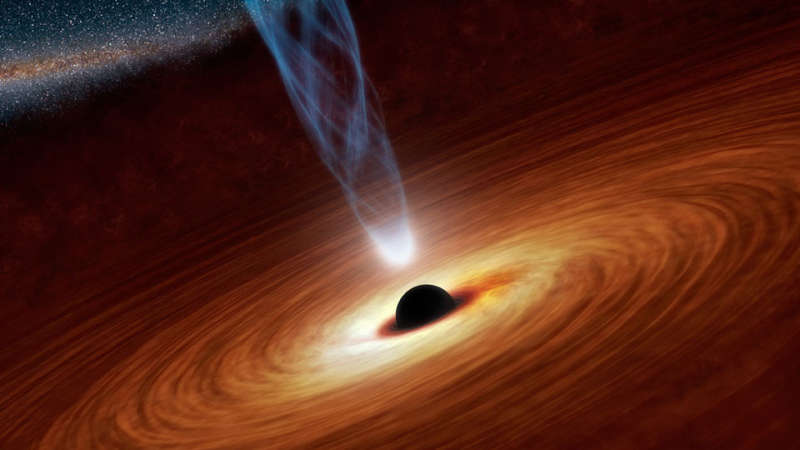
|
Credit & Copyright: Harvard-Smithsonian
Center for Astrophysics
Explanation:
How fast can a black hole spin?
If any object made of regular matter spins too fast -- it breaks apart.
But a black hole might not be able to break apart -- and its maximum spin rate is
really unknown.
Theorists usual model rapidly rotating black holes with the
Kerr solution to Einstein's
General Theory of Relativity,
which predicts several
amazing and
unusual things.
Perhaps its most easily testable prediction, though, is that matter entering a
maximally rotating black hole should be last seen
orbiting at near the speed of light, as seen from far away.
This prediction was tested recently by NASA's
NuSTAR and
ESA's
XMM
satellites by observing the supermassive black hole at the center of
spiral galaxy NGC 1365.
The near light-speed limit was
confirmed by measuring
the heating and
spectral
line broadening
of nuclear emissions at the inner edge of the surrounding
accretion disk.
Pictured above is an artist's illustration depicting an accretion disk of normal
matter swirling around a black hole, with a
jet emanating from the top.
Since matter randomly falling
into the black hole
should not spin up a black hole this much,
the NuSTAR and XMM measurements also validate the existence of the
surrounding accretion disk.
|
January February March April May June July August September October November December |
| ||||||||||||||||||||||||||||||||||||||||||||||||
NASA Web Site Statements, Warnings, and Disclaimers
NASA Official: Jay Norris. Specific rights apply.
A service of: LHEA at NASA / GSFC
& Michigan Tech. U.
Based on Astronomy Picture
Of the Day
Publications with keywords: black hole - accretion disk
Publications with words: black hole - accretion disk
See also:
